Ceanothus greggii, Desert Ceanothus
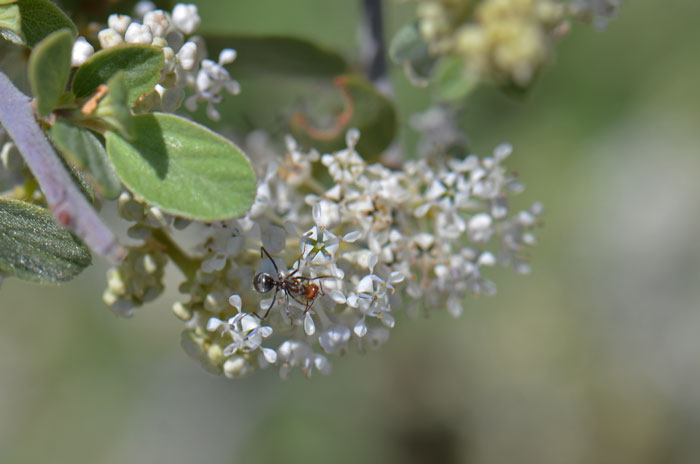
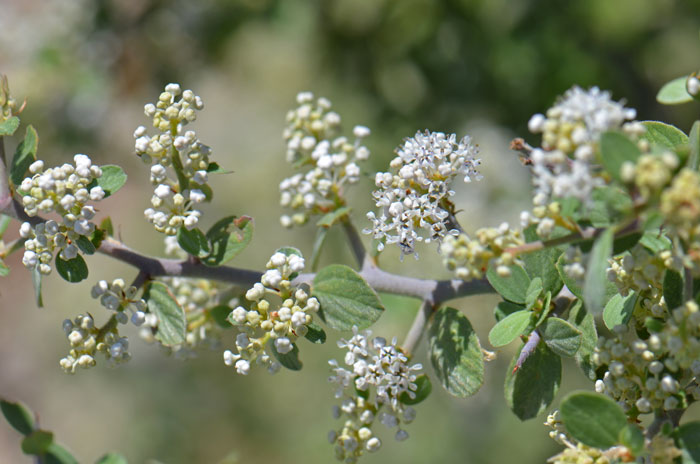
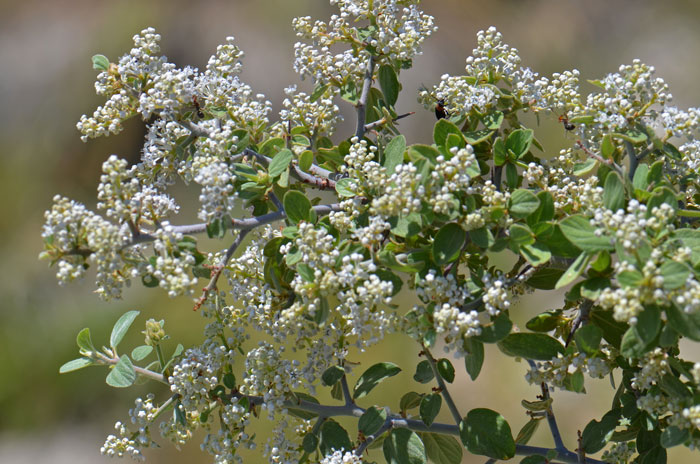
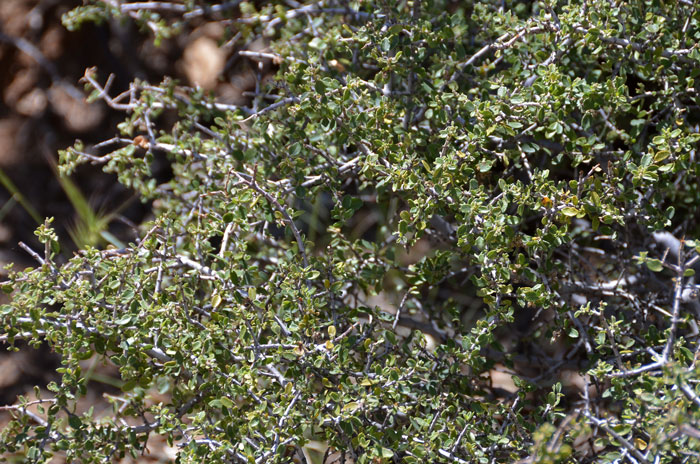
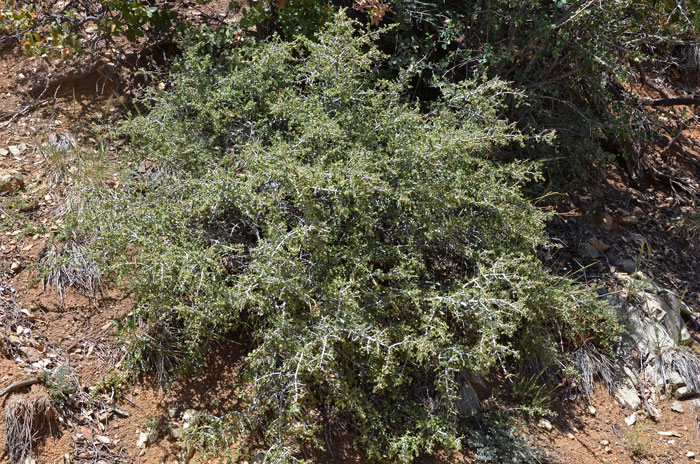
Scientific Name: Ceanothus greggii
Common Name: Desert Ceanothus
Also Called:
Family: Rhamnaceae or Buckthorn Family
Synonyms: ()
Status: Native
Duration: Perennial.
Size: Up to 5 feet, but usually much smaller.
Growth Form: Shrub; erect; twigs are round, gray, pubescence is tomentose plants semi-evergreen.
Leaves: Green; shape variable, elliptical to obovate to oblanceolate; texture thick, somewhat leathery; pubescence also variable; opposite, stipules present; short petioles, margins variable, entire to dentate; top and bottom leaf surface gray-canescent.
Flower Color: Whitish, bluish or pinkish; fragrant flowers in tight clusters; inflorescence small often not surpassing the leaves, raceme-like.
Flowering Season: March to May, occasionally again in September with sufficient monsoon rainfall.
Elevation: 3,000 to 7,000 feet; 900 to 6,500 feet in California.
Habitat Preferences: Dry slopes, very common in Chaparral communities, desert mountains.
Recorded Range: Ceanothus greggii is found in the southwestern United States in AZ, CA, NM, NV, TX, UT. In Arizona it is found almost throughout the state in preferred habitats above 3,000 feet. It is also native to Baja California and northern Mexico.
North America & US County Distribution Map for Ceanothus greggii.
U.S. Weed Information: No information available.
Invasive/Noxious Weed Information: No information available.
Wetland Indicator: No information available.
Threatened/Endangered Information: No information available.
In Arizona, New Mexico, Texas and Utah there are 4 species of Ceanothus, in California there are 45 species, Nevada has 5 species. All data is approximate and subject to taxonomic changes.
There are 4 varieties in Ceanothus greggii;
Ceanothus greggii var. franklinii, Desert Ceanothus (UT);
Ceanothus greggii var. greggii, Desert Ceanothus (AZ, NM, TX);
Ceanothus greggii var. perplexans, Desert Ceanothus (AZ, CA, NV);
Ceanothus greggii var. vestitus, Mojave Ceanothus (AZ, CA, NV, UT).
Comments: Desert Ceanothus, has important value as browse for deer, elk, rabbits and livestock. Birds feed on the small seeds. The plants and flowers are important to bees and moths.
Ceanothus greggii is another species named in honor of Josiah Gregg, (1806-1850). The type for Ceanothus greggii var. vestitus is from Hackberry, Mohave County, Arizona (Goldman 2946).
In Southwest Desert Flora also see; Fendler's Ceanothus, Ceanothus fendleri and Ceanothus Deerbrush, Ceanothus integerrimus.
Ceanothus greggii has been used for fuel by North American indigenous peoples.
Yavapai Other, Fuel, Branches used for kindling.
See ethno-botanical uses at Native American Ethnobotany, University of Michigan, Dearborn.

